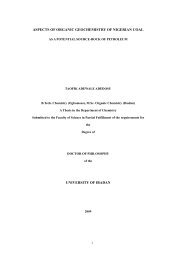View/Open - TWAS & OWSD Thesis Repository Home
View/Open - TWAS & OWSD Thesis Repository Home
View/Open - TWAS & OWSD Thesis Repository Home
Create successful ePaper yourself
Turn your PDF publications into a flip-book with our unique Google optimized e-Paper software.
Three well-defined types of host-pathogen interactions occur for the P.<br />
infestans in tomato: highly compatible, partially compatible, and incompatible<br />
interactions (Gallegly and Marvel 1955). It was further observed that the moderately<br />
resistant commercial hybrids ‘Ikram’, ‘Heinz H7155’ and Alambra F 1 ’ exhibited<br />
susceptibility and the disease progress rate was higher comparing with the other<br />
genotypes. In contrast some of these varieties; ‘Ikram’ and Heinz H7155 were<br />
recorded to be moderately resistant in another study (Fiorini, 2008). This<br />
discrepancy in the type of reaction may be due to racial differences of the pathogen<br />
and structural change in the virulence genes of the pathogen or environmental<br />
factors interactions.<br />
3.1.1The analysis of variance for Y 50 , Y max and AUDPC<br />
The analysis of variance of the three disease variables Y 50 , Y max and AUDPC,<br />
showed that the great part of variation was attributed to genotypes that had highly<br />
significant differences for these traits (Table 4) whereas there were no significant<br />
differences for replicates (blocks) or between/within the plots. Analysis of variance<br />
showed highly significant differences among the genotypes indicating the<br />
occurrence of broad range of variability in the expression of resistant.<br />
It can be observed from the analysis of variance that the coefficient of<br />
variance in the case of severity at halfway epidemic (Y 50 ) had the highest value<br />
(33.16) than the other traits; severity at the end of the epidemic (Y max ) and area<br />
under disease progress curve (AUDPC). This was expected during the period of<br />
evaluation, due to the difficulty of having homogeneity of the scores over all the<br />
plants of the same treatment and at the same time, and may be attributed to the<br />
disease progress rate, that was not equal over the replicates.<br />
35


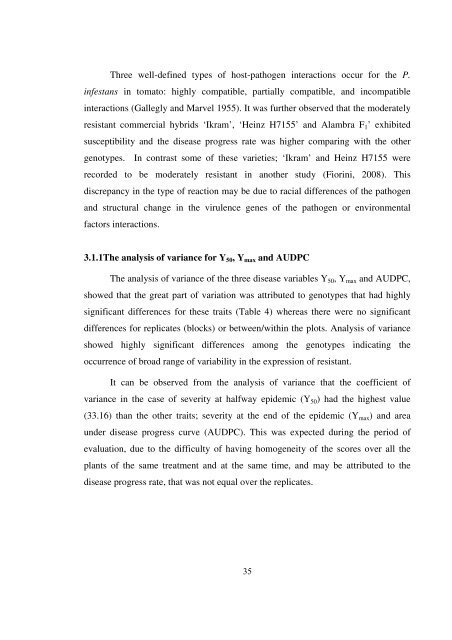

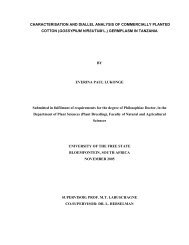


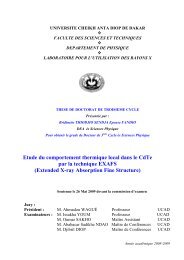
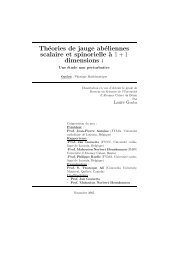


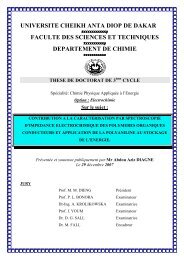
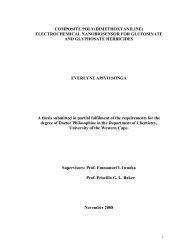

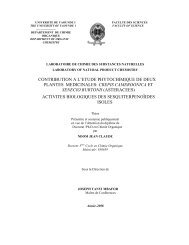
![SYNTHESIS AND ANTI-HIV ACTIVITY OF [d4U]-SPACER-[HI-236 ...](https://img.yumpu.com/30883288/1/190x245/synthesis-and-anti-hiv-activity-of-d4u-spacer-hi-236-.jpg?quality=85)
